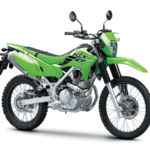Kawasaki’s Z-series is known for its aggressive design, sharp performance, and everyday usability. With the launch of the Z500 as a successor to the popular Z400

Comparison Chart: Z400 vs Z500
| Feature | Kawasaki Z400 | Kawasaki Z500 |
|---|---|---|
| Engine | 399cc, liquid-cooled, parallel-twin | 451cc, liquid-cooled, parallel-twin |
| Power | 44–48 bhp | ~50 bhp (estimated) |
| Torque | 37–38 Nm | ~42 Nm (estimated) |
| Gearbox | 6-speed, slipper clutch | 6-speed, slipper clutch |
| Frame | Trellis frame | Updated trellis frame |
| Kerb Weight | ~167 kg | ~170 kg |
| Fuel Tank Capacity | 14 litres | 14 litres |
| Brakes | Dual disc brakes with dual-channel ABS | Dual disc brakes with dual-channel ABS |
| Suspension | Front: Telescopic Fork, Rear: Mono-shock | Updated suspension setup |
| Design | Sharp naked styling, LED headlamp | Sharper look with updated LED & body panels |
| Instrument Console | Semi-digital display | Fully digital TFT with Bluetooth |
| Price (India) | ₹5.00–₹5.20 lakh (estimated, on-road) | ₹5.50–₹5.80 lakh (estimated, on-road) |
Key Differences Explained
Engine & Performance
The Z500 comes with a larger engine, offering more power and torque
Design & Features
While the Z400 still looks sporty, the Z500 gets sharper body panels, an updated LED setup, and a more aggressive presence on the road.
Technology
Z500features a modern full-TFT display with Bluetooth connectivity, something missing in the Z400’s semi-digital unit.
Conclusion: Which One is Right for You?
hoose Z400 if you want a lighter, more affordable bike for city use and occasional highway rides.
Go for Z500 if you want more power, a premium look, advanced features, and better long-term value.
Note: Specifications and launch details are based on available information and may change upon official release.






Leave a Reply